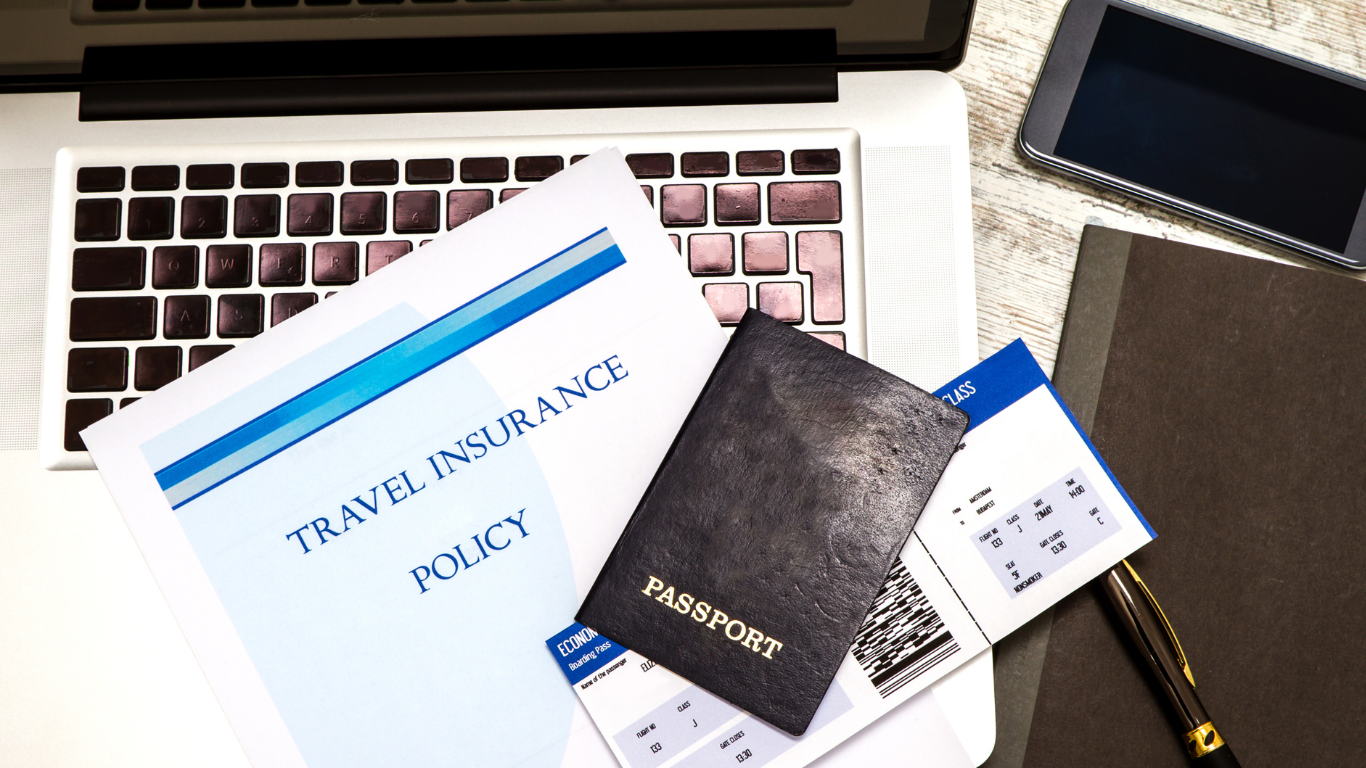How to Craft the Perfect Travel Itinerary

Creating a travel itinerary for your executive is a very important task you’ll encounter as an executive assistant. A well-organized travel itinerary can make or break an executive’s business trip, saving them a great deal of stress and time while also showcasing your exceptional attention to detail and time management skills as an executive assistant.
The responsibility of creating a travel itinerary can feel overwhelming, even for the most experienced executive assistants. However, fear not, as we will guide you through the process of putting together a successful and seamless itinerary for your executive!
Discuss Their Travel Preferences:
The first and most essential step in creating a travel itinerary for your executive is to understand their personal travel preferences, especially if this is your first time planning a trip for them. You want to be on the same page from the start to ensure a smooth and enjoyable journey.
Flight considerations:
- Determine if they have a preferred airline or if they collect air miles for a particular carrier.
- Understand their seating preferences, such as flying business class and choosing between window or aisle seats and front or back of the plane.
- Inquire about their in-flight meal preferences and any food allergies they may have.
- Clarify whether layovers are acceptable or if they prefer direct flights for efficiency.
Transportation preferences:
- Learn about their preferred mode of transportation, such as renting a car, private driver, rideshare service, or public transportation.
- Determine if they prefer you to book transportation in advance or if they’d rather arrange it upon arrival.
Accommodation preferences:
- Inquire about their accommodation preferences, whether they prefer staying in a hotel or a rented apartment or condo.
- Find out if there are specific amenities they prefer to have, such as an on-site restaurant, gym, pool, conference rooms, etc.
- Understand their breakfast preferences, whether they prefer it included at the hotel or prefer to eat out.
Additional things to know:
- Determine if they like to explore the city during their free time or if they prefer going back to their hotel to rest.
- Ask if they want you to book any additional activities during their trip.
- Inquire about their meal preferences for business or personal dinners.
- Find out if they prefer a digital travel itinerary or a printed paper itinerary.
- Check if they want a bare-bones itinerary or a super detailed one.
- Check if the company has any corporate discounts you can utilize for bookings.
You can gather this information by asking your executive directly, consulting with other colleagues, or reaching out to a previous assistant, if appropriate. Keeping a document with these details will help you easily refer back to them when booking future travel.
Know the Purpose of The Trip:
Once you have a good understanding of your executive’s general travel preferences, it’s time to delve into the specifics of their upcoming trip.
Understand the purpose of the trip:
- Determine the primary goal of the trip, whether it’s conducting research, attending a conference or business meeting, or pitching business to a client.
- If there are multiple engagements during the trip, prioritize and understand their preferences to ensure the itinerary aligns with their goals and objectives.
The purpose of the trip will significantly influence the itinerary and travel plans. For example, if they are looking to impress a prospective client, you may want to book a nice hotel close to the client’s office with an on-site bar for post-meeting drinks.
Know the Details:
Creating a comprehensive travel itinerary for your executive requires knowing exactly where they need to be and when. Once you know the key meetings and events, you can carefully plan the rest of the itinerary around them, ensuring a well-structured and efficient schedule.
Be sure to note the time, date, and location of every meeting, appointment, and business dinner or event. This level of detail will not only impress your executive but also help them stay organized and on top of their engagements during the trip.
Make Note of Non-Work-Related Requests:
Even though your executive is traveling for business, they may also have other personal requests or interests in the place they’re visiting. Taking note of these preferences and incorporating them into the itinerary will enhance their overall experience.
Non-work requests may include:
- Meeting up with friends or family who live in the city.
- Keeping up with their exercise routine, requiring access to fitness facilities or nearby outdoor spaces.
- Sightseeing and exploring local attractions during downtime.
- Dining at specific restaurants they enjoy or that are renowned in the area.
- Recommendations for shopping destinations to buy gifts or souvenirs for their loved ones.
By catering to these personal requests, you will not only demonstrate thoughtfulness as an executive assistant but also contribute to a more enjoyable and well-rounded trip.
Creating the Actual Itinerary:
With all the essential information gathered and considered, it’s time to piece together the travel itinerary like a puzzle, ensuring all the elements fit cohesively and meet their needs and preferences.
Book from Door-to-Door:
As you begin booking, it’s crucial to think about the journey from door to door. This means not only securing their flights but also planning transportation to and from the airport at both ends of the trip. Put yourself in your executive’s shoes and consider what they would require at each stage of the journey.
Timing is Key:
When it comes to travel planning, the timing of each element is just as critical as the locations and modes of transportation. Carefully think about the time needed to get from one point to another, and factor in time for meals, filling out paperwork, or buying tickets for public transit. Avoid creating a tight schedule that might cause your boss to rush or show up late to important meetings.
Consider:
- How much time ahead of their flight do they need to arrive at the airport to check-in and clear security?
- How long will it take them to get to the airport, taking into account potential traffic or other delays?
- What is the estimated travel time from their hotel to the client’s office or other essential locations?
By considering these time factors, you can create a balanced itinerary that allows for a seamless and stress-free trip.

Be Mindful of Small Details:
In travel planning, it’s often the small details that make a significant difference. As an executive assistant, your role is to be mindful of these details to ensure a smooth and trouble-free trip for your executive.
Consider:
- Have you considered any time zone differences, particularly if the trip involves international travel?
- If a flight arrives before the hotel’s official check-in time, have you planned for luggage storage or early check-in?
- Research whether modes of transportation in the area accept credit cards, or if your boss needs to have local currency available.
- Always have a ‘Plan B’ in place in case something goes wrong, such as a hotel cancellation or flight delay. Flexibility and contingency planning are essential in travel arrangements.
Additionally, consider how you can provide assistance from the office if your executive experiences any travel-related delays or issues during their trip.
Think of ‘Little Extras’:
Going above and beyond in travel planning will not only impress your executive but also make you stand out as an exceptional executive assistant. Consider adding some thoughtful touches and ‘little extras’ that will enhance their trip and contribute to their overall satisfaction.
Extras to consider include:
- Putting together a packing list based on the local weather forecast to ensure they are adequately prepared for any climate conditions.
- Ordering extra business cards for the trip, as they might be attending multiple events or meetings.
- Downloading relevant city guide apps or local transportation apps onto their phone to assist with navigation and exploring the area.
- Compiling a list of restaurant recommendations based on their culinary preferences and proximity to their accommodation or meeting locations.
- Researching and suggesting leisure activities or cultural experiences for their downtime to make the most of their free time.
- Packing a selection of healthy snacks for the plane journey to keep your executive energized during their travels.
Make Sure Travel Documents Are Updated:
Before your executive embarks on their trip, ensure that all their essential travel documents are up-to-date and in order. Don’t assume they have taken care of this on their own; it’s better to double-check and avoid any potential complications.
Before the trip, double-check the following:
- Confirm the expiration dates of their passport and driver’s license.
- Verify that their travel insurance is active and provides adequate coverage for the trip.
- Check if they need a Visa for any international travel they have planned.
- Determine if they require any vaccinations or proof of vaccinations for the country they’ll be visiting, and ensure they have obtained the necessary immunizations.
By taking care of these details in advance, you can prevent any last-minute travel document-related hurdles that could disrupt the trip.
Stay Organized and Keep Details in One Place:
The final travel itinerary you provide to your executive should be a comprehensive and well-organized document that contains all relevant travel documents and information in one centralized location. Being organized and having everything easily accessible will not only impress your boss but also ensure a smooth travel experience for them.
You can choose to create a digital travel pack or a physical wallet to keep everything in one place. Better yet, consider providing both options for extra preparedness.
The travel pack should include:
- A daily schedule that outlines all locations, times, and events on the itinerary.
- Detailed booking information for flights, hotel accommodations, and transportation arrangements.
- Contact numbers for airlines, hotels, and transport companies in case of emergencies or changes.
- A list of names and phone numbers of your executive’s overseas contacts and any colleagues they’re traveling with for easy communication.
- Copies of boarding passes for their flights.
- Any necessary visas or travel permits for international trips.
- Copies of their travel insurance policy documents for reference.
- A copy of their passport and driver’s license to have on hand.
- A packing list tailored to the weather forecast and specific trip requirements.
- Any additional extras or recommendations, such as a map of the city or local restaurant and attraction suggestions.
Consider using a travel planning tool such as TripIt to help keep all of these details organized in one place. This will streamline the process and ensure that you can quickly access and provide any necessary information throughout the trip.
Creating a well-crafted travel itinerary for your executive requires thorough planning, attention to detail, and consideration of their preferences and needs. By following the steps outlined above, you can ensure a successful and stress-free business trip, showcasing your expertise and dedication as an executive assistant.
LifeSquire Can Help You Excel as an Executive Assistant
Want to become the best possible executive assistant? LifeSquire Academy can help. Our professional assistant coaching program helps you build the skills you need to be a fantastic EA who exceeds your executive’s expectations.

0 Comments